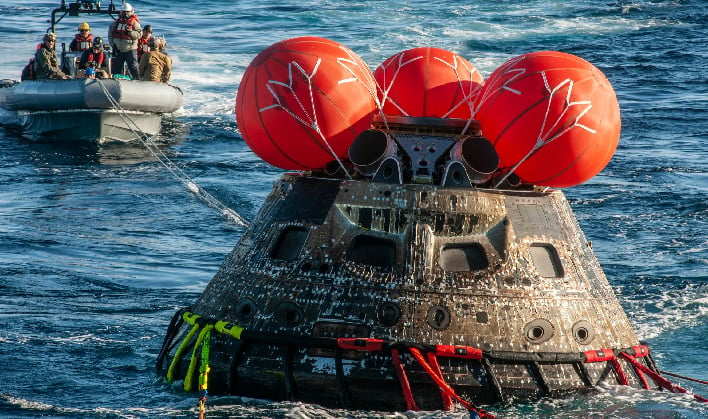Watch NASA’s Thrilling Video Of Its Orion Spacecraft Coming In Like A Fireball

NASA’s Artemis 1 mission was the first in a series of missions that is aimed at putting human boots back onto the surface of the Moon, as well as future missions to Mars. The mission took 25.5 days, with Orion performing two lunar flybys that brought the spacecraft within 80 miles (129 kilometers) of the Moon’s surface. Orion traveled nearly 270,000 miles (435,000 kilometers) from Earth. Then, on December 11, 2022, the space agency’s Orion spacecraft made a successful reentry into Earth’s atmosphere before splashing down in the Pacific Ocean. The video below highlights the moment the Orion spacecraft made reentry.
Orion’s crew and service module is what will carry astronauts into deep space. Referred to by NASA at times as the capsule, it is the product of more than 60 years of space exploration by the space agency. Built by Lockheed Martin, the capsule will provide up to four astronauts with living space on missions up to 21 days without having to dock with another spacecraft.
One year ago today, NASA’s Orion spacecraft reentered the atmosphere after completing a 1.4 million-mile, 25.5 day #Artemis I mission around the Moon. View the full length video here: https://t.co/0Rn7eRETua pic.twitter.com/gX95N8Kz5J
— Orion Spacecraft (@NASA_Orion) December 11, 2023
The thermal control system keeps astronauts inside the Orion spacecraft at a comfortable temperature. It includes an active portion, which the space agency says transfers the heat of the entire spacecraft to the service module radiators. The thermal control system also includes a passive portion, which protects the service module from internal and external environments.
NASA’s upcoming Artemis II mission will be the first crewed mission of the historic Artemis program. The mission is expected to last 10-days and will test NASA’s foundational human deep space exploration capabilities. The video above of Orion reentering Earth’s atmosphere gives a glimpse of what the four astronauts onboard Artemis II have to look forward to.

